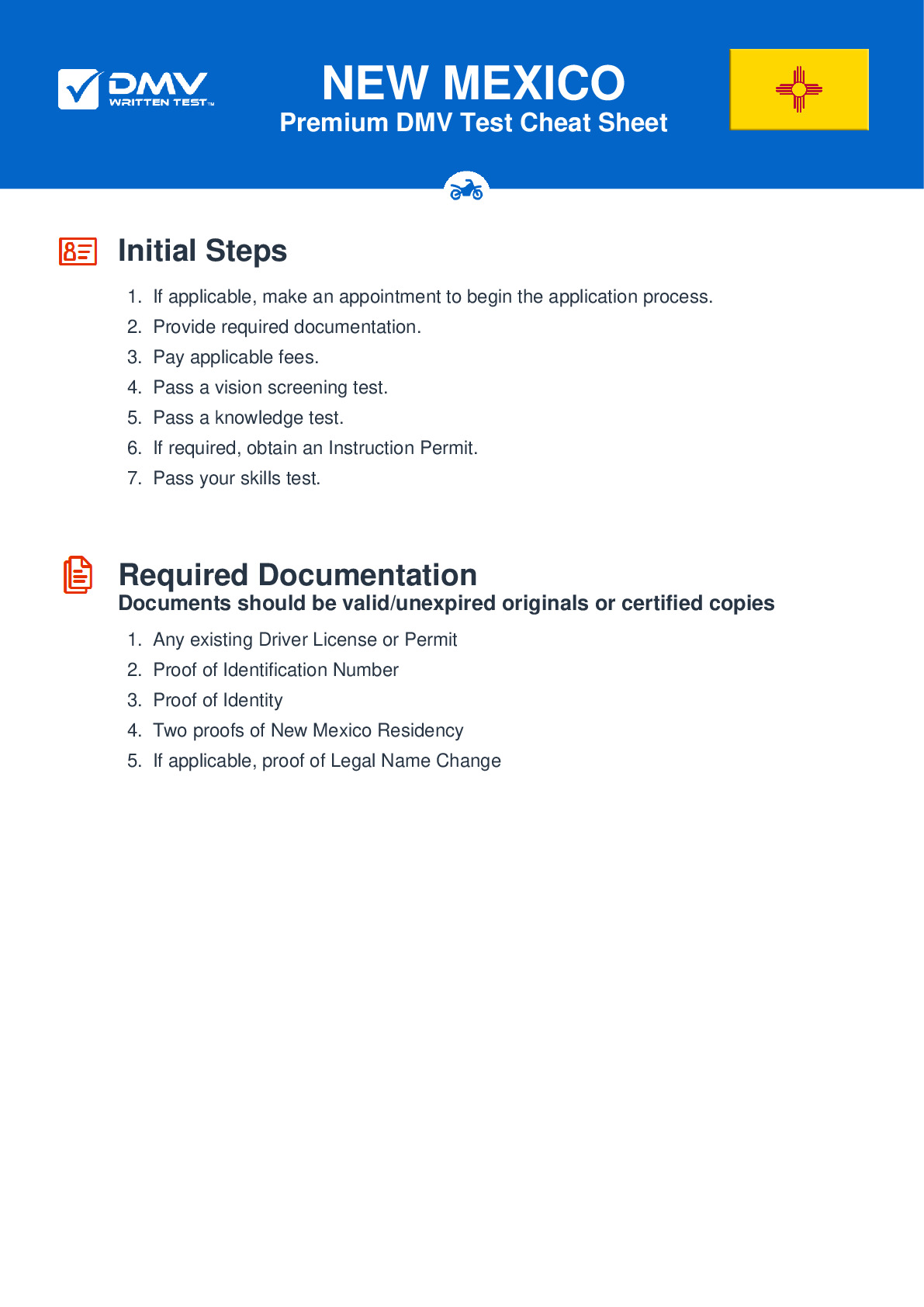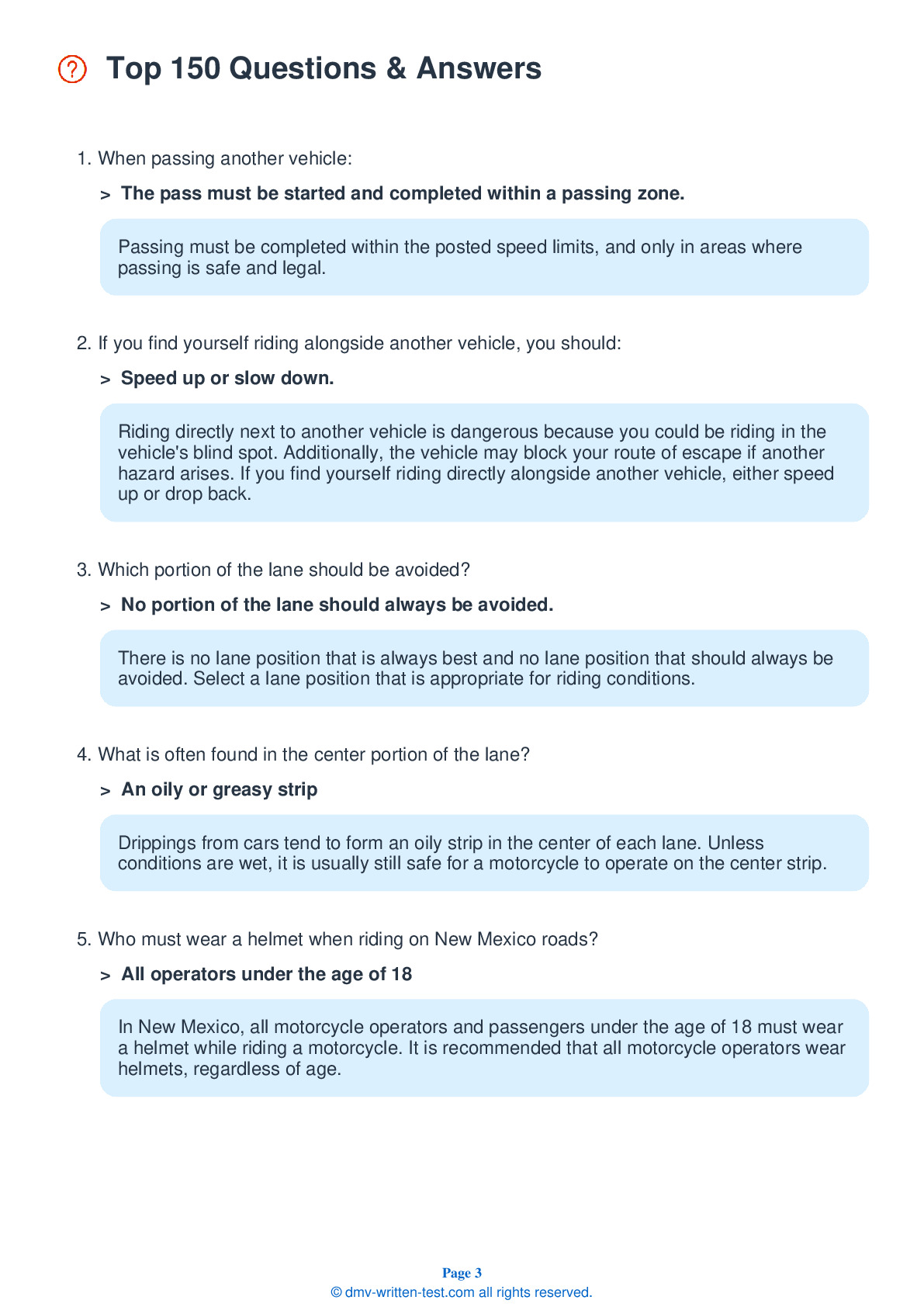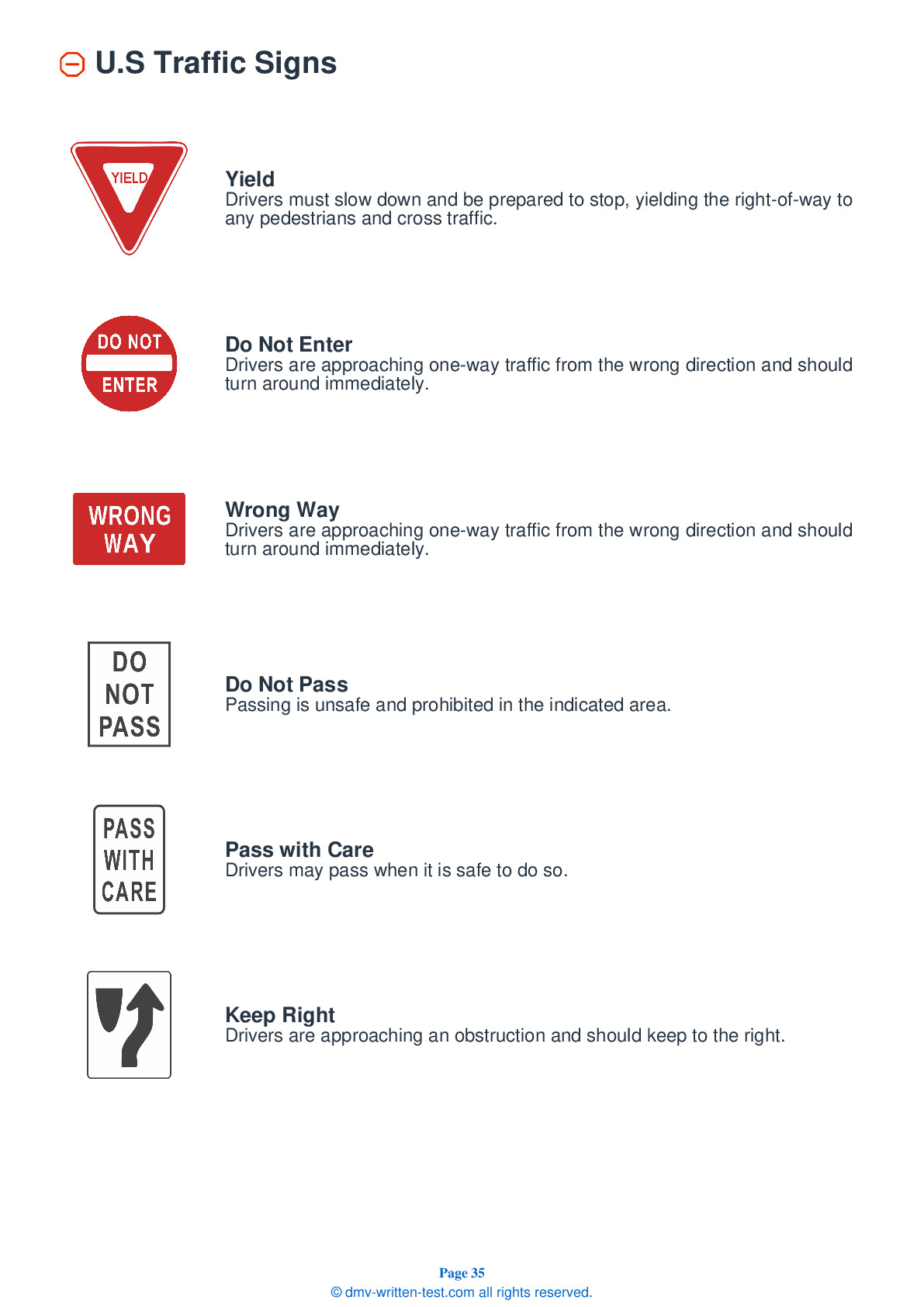2025 New Mexico Motorcycle Permit Test 16
The following questions are from real DMV written motorcycle permit tests. These are some of the actual permit questions you will face in New Mexico when getting your motorcycle learners permit. Each motorcycle theory practice test question has three answer choices. Select one answer for each question and select "grade this section." You can find this button at the bottom of the drivers license quiz. For a complete list of questions and answers for New Mexico please visit https://cheat-sheets.dmv-written-test.com/en/new-mexico/motorcycle.
Number of Tests
Number of Question
Passing Score
7. When stopping, it is best to:
Explanation
For maximum straight-line braking, you should apply the brakes smoothly and firmly. As more weight transfers forward, more will be more traction available at the front wheel, allowing you to apply the front brake with progressively increasing force while reducing the pressure being used on the rear brake. Keep your knees against the gas tank and your eyes up to help keep yourself moving in a straight line.
8. When operating a motorcycle on a slippery surface, you should:
Explanation
When riding on slippery surfaces, you should reduce your speed. Make certain to use both brakes when braking and avoid making sudden moves.
9. When riding in rain or fog, you should:
Explanation
You should use your low beam headlight when riding in snowy, rainy, or foggy weather. A high beam headlight can reflect off of these conditions and make it more difficult for a rider to see.
10. To reduce your reaction time, you should:
Explanation
In potential high-risk areas, such as near intersections, shopping areas, school zones, and construction zones, cover the clutch and both brakes to reduce the time you will need to react to potential hazards.
11. When riding in a group, inexperienced riders should position themselves:
Explanation
In a group of motorcyclists, riders with less experience should be positioned toward the front of the group, just behind the leader. This will allow more experienced riders to keep an eye on them without forcing the inexperienced rider to lead the group.
12. Long-term exposure to wind noise:
Explanation




